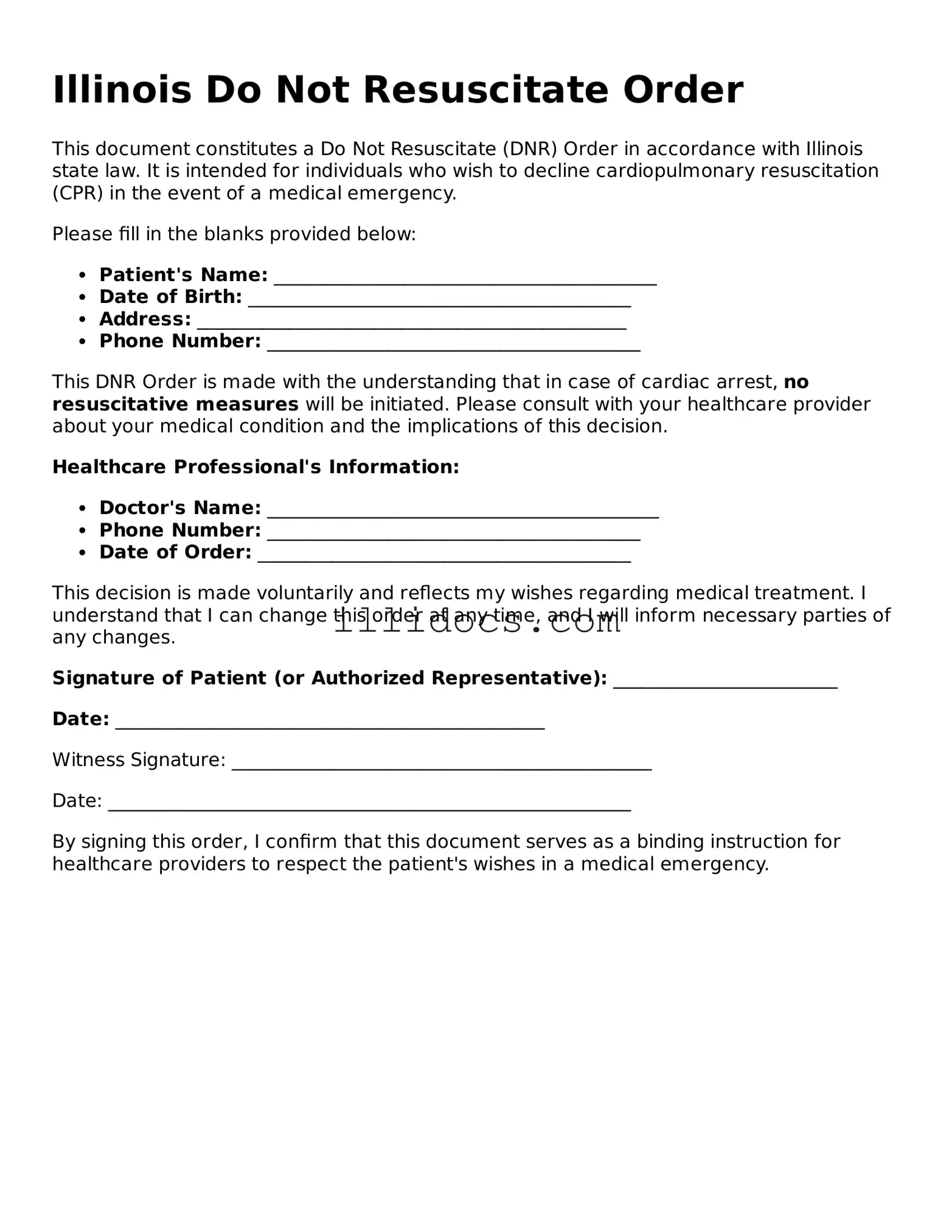What is a Do Not Resuscitate (DNR) Order in Illinois?
A Do Not Resuscitate Order is a legal document that allows individuals to refuse cardiopulmonary resuscitation (CPR) and other life-saving measures in the event of a cardiac arrest or respiratory failure. In Illinois, this order must be signed by a physician and is intended for patients who wish to avoid aggressive medical interventions at the end of life.
Who can request a DNR Order?
Any adult who is capable of making informed medical decisions can request a DNR Order. This includes individuals facing terminal illnesses, severe chronic conditions, or those who simply wish to have control over their end-of-life care. In some cases, a legal guardian or healthcare proxy may request a DNR on behalf of an incapacitated individual.
How do I obtain a DNR Order in Illinois?
To obtain a DNR Order, you must first discuss your wishes with your healthcare provider. If they agree that a DNR Order is appropriate, they will complete the necessary form. This form must be signed by both the patient (or their representative) and the physician. Once completed, the DNR Order should be kept in an easily accessible location, such as with your medical records or on your refrigerator.
Is a DNR Order valid in all healthcare settings?
Yes, a DNR Order is valid across all healthcare settings in Illinois, including hospitals, nursing homes, and at home. However, it is crucial to ensure that the order is properly documented and communicated to all healthcare providers involved in your care to avoid any confusion during a medical emergency.
Can a DNR Order be revoked?
Absolutely. A DNR Order can be revoked at any time by the individual who signed it. To do so, simply inform your healthcare provider of your decision. It is also advisable to destroy any copies of the original DNR Order to prevent any misunderstandings in the future.
What should I do if I change my mind about my DNR Order?
If you change your mind about your DNR Order, communicate your wishes to your healthcare provider immediately. You can revoke the order verbally or in writing. It is essential to ensure that your new wishes are documented and that all relevant parties are informed to avoid any unintended interventions.
Where can I find the Illinois DNR Order form?
The Illinois DNR Order form can typically be obtained from your healthcare provider, hospitals, or through various online resources provided by health departments and advocacy organizations. Make sure you are using the most current version of the form to ensure compliance with state regulations.
